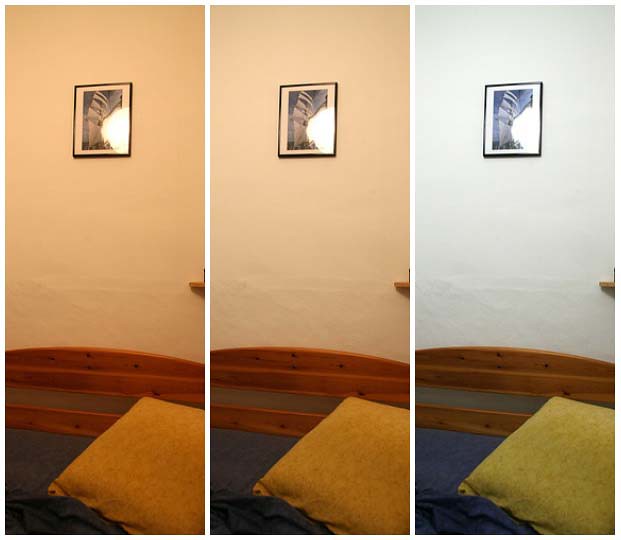Understanding Automatic White Balance (AWB)

 Oct 1, 2025
Oct 1, 2025
 Lighting
Lighting
In the world of photography and video production, capturing true-to-life colors is essential. One of the key elements that helps achieve this is white balance settings. These settings ensure that the colors in your images or videos appear natural under various lighting conditions. While you can manually adjust the white balance settings, most cameras offer an automatic solution called Automatic White Balance (AWB).
In this blog, we will explore how AWB works, its benefits, limitations, and when to rely on white balance settings manually for more accurate color reproduction.
What Is Automatic White Balance (AWB)?
Automatic White Balance (AWB) is a camera feature designed to adjust the white balance settings automatically based on the lighting conditions in the scene. Essentially, AWB analyzes the light coming into the camera and compensates for the color temperature to make white objects appear truly white. This helps maintain consistent and accurate color reproduction across different lighting environments.
The primary goal of AWB is to eliminate color casts caused by the lighting, whether it’s the warm yellow tones from incandescent bulbs or the cool blue hues from daylight. AWB works by detecting the dominant color in the scene and adjusting the white balance accordingly.
How Does AWB Work?
When you use AWB, the camera automatically determines the white balance settings for the scene. It does so by analyzing the light spectrum and comparing the color temperature. Once it identifies the light source, AWB adjusts the colors in the image to make white areas appear neutral, correcting any color bias caused by the light.
For instance:
- Daylight tends to have a cool blue tone.
- Incandescent lighting has a warm yellowish hue.
- Fluorescent lighting can introduce a greenish tint.
AWB can easily detect these differences and adjust accordingly to provide a more natural-looking image or video.
The Benefits Of Using AWB
1. Convenience
One of the most significant advantages of using AWB is its convenience. As a photographer or videographer, adjusting the white balance settings manually for each lighting situation can be time-consuming. AWB eliminates this hassle by automatically adjusting the white balance, allowing you to focus on your composition and shot without worrying about color accuracy.
2. Consistency
When shooting in changing lighting conditions, such as moving between indoors and outdoors, AWB ensures that the colors in your photos or videos remain consistent. AWB adapts quickly to the environment, which is particularly helpful in dynamic situations, like event or documentary photography.
3. Simplicity For Beginners
For those who are new to photography or video production, using AWB makes the white balance process easier. You don’t need to understand the nuances of white balance settings or constantly tweak your settings for every shot. AWB is ideal for beginners who want to focus on capturing content rather than dealing with technical details.
Limitations Of AWB
While AWB is a useful feature, it does have its limitations. In some cases, AWB may not always produce the most accurate results, especially in complex or mixed lighting situations.
1. Inaccurate Color Rendering
AWB may struggle in scenes with multiple light sources, such as when you're shooting indoors with both natural light from a window and artificial lighting from a lamp. In these scenarios, AWB might not be able to balance the color correctly, leading to unwanted color casts, either too warm or too cool.
2. Loss of Creative Control
While AWB does a great job in general, it takes away your ability to intentionally set the white balance settings for creative effects. For example, if you want to intentionally warm up a scene for a golden-hour effect, AWB will automatically correct the warmth, preventing you from achieving the desired mood.
3. Lighting Conditions
AWB can sometimes struggle in unusual lighting conditions. For example, in scenes lit by neon lights or in low-light environments, AWB may fail to properly adjust the white balance settings, resulting in unnatural color casts that can be difficult to correct later.
How To Set Manual White Balance
Although AWB works in many situations, there are times when it’s better to use manual white balance settings for more control over the color temperature. Here are a few situations when manual adjustment is preferred:
- Mixed Lighting: If your scene has different light sources with varying color temperatures, manual white balance will allow you to balance the colors more accurately.
- Studio Photography: In a controlled environment with consistent lighting, manual white balance settings will help you fine-tune the color temperature for the most accurate results.
- Creative Intent: If you're looking to create a specific mood or effect with lighting, manual adjustments let you push the white balance settings for creative purposes.
Setting White Balance Automatically
Most modern cameras have an AWB function that can be easily enabled or disabled. Here's how you can use it:
- Find the AWB option: Go into your camera’s settings and look for the white balance settings. AWB is usually the default setting.
- Activate AWB: Select the AWB option, and your camera will automatically adjust the white balance based on the lighting conditions.
- Monitor the results: Check the color accuracy on your camera’s display. If necessary, fine-tune the AWB or switch to manual white balance for more control.
Conclusion
Automatic White Balance (AWB) is a powerful tool for simplifying the white balance process, especially for beginners or in fast-changing lighting environments. By automatically adjusting the white balance settings, AWB helps ensure accurate colors and consistent lighting across your photos and videos.
However, for more precise control and creativity, manual white balance adjustments may be necessary. Understanding how to use AWB, and when to switch to manual settings, will help you create visually compelling content with true-to-life colors. Whether you're shooting indoors, outdoors, or under complex lighting conditions, AWB provides a convenient solution for achieving well-balanced shots with minimal effort.
